Accepted Scientific Name: Mammillaria albiflora (Werderm.) Backeb.
Blätt. Kakteenf. 1937(2): [3] genus 131, sp. 7 (fig.). as Mamillaria
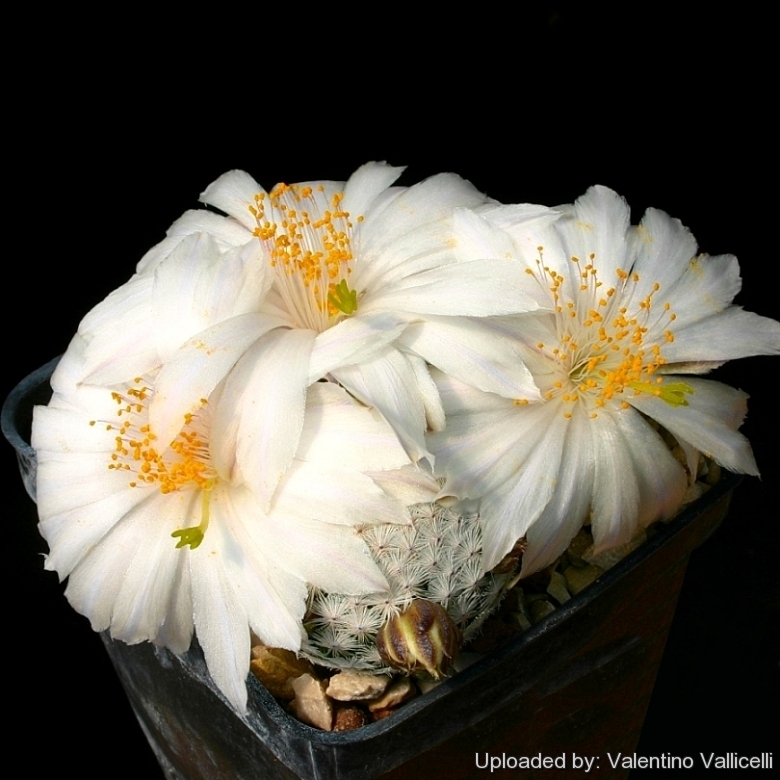
Escobariopsis albiflora (Mammillaria albiflora) Photo by: Valentino Vallicelli
Albiflora in Latin means "white flowering".
Origin and Habitat: South of Pozos, Guanajuato, Mexico (Calera and road from Pozos to San Jose Iturbide) at 50 or more km from the habitat of Mammillaria herreraeSN|9214]]SN|9214]].
Habitat: It grows at 2150-2200 metres in altitude.
Synonyms:
Common Names include:
UKRAINIAN (Українська): Мамілярія альбіфлора
Description: it is a small cactus, usually solitary, globular or cylindrical (clusters of stems can be seen in cultivation)
Stem: Somewhat cylindrical, slender, about 2 cm wide and 5-7 cm high, obscured by the spines. Stem and tubercles without latex. The axil is naked.
Spines: 60-80 radial spines (less than in M. herrerae which has 100 or more), white, fine and interlacing. No central spines.
Roots: Taproot
Flower: 3,5 cm long and wide, white (rarely with a pinkish flush when grown in full sun). Flowering period (in Europe): April-May
Fruit: Whitish, retained within the spines, but not within the plant body. (see: cryptocarpy).
Seeds: Black.
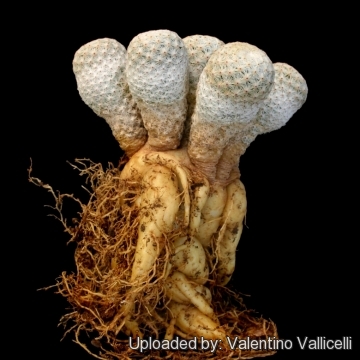 Escobariopsis albiflora (Mammillaria albiflora) Photo by: Valentino Vallicelli
Escobariopsis albiflora (Mammillaria albiflora) Photo by: Valentino Vallicelli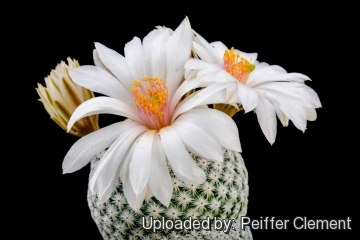 Escobariopsis albiflora (Mammillaria albiflora) Photo by: Peiffer Clement
Escobariopsis albiflora (Mammillaria albiflora) Photo by: Peiffer Clement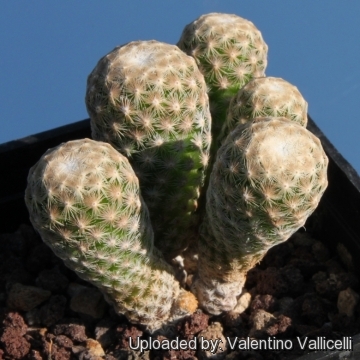 Escobariopsis albiflora (Mammillaria albiflora) Photo by: Valentino Vallicelli
Escobariopsis albiflora (Mammillaria albiflora) Photo by: Valentino Vallicelli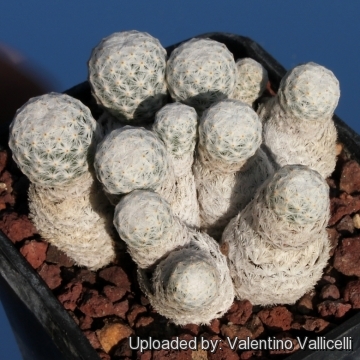 Escobariopsis albiflora (Mammillaria albiflora) Photo by: Valentino Vallicelli
Escobariopsis albiflora (Mammillaria albiflora) Photo by: Valentino Vallicelli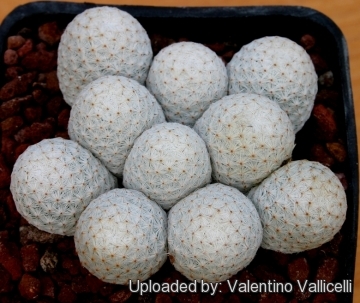 Escobariopsis albiflora (Mammillaria albiflora) Photo by: Valentino Vallicelli
Escobariopsis albiflora (Mammillaria albiflora) Photo by: Valentino Vallicelli Escobariopsis albiflora (Mammillaria albiflora) Photo by: Valentino Vallicelli
Escobariopsis albiflora (Mammillaria albiflora) Photo by: Valentino Vallicelli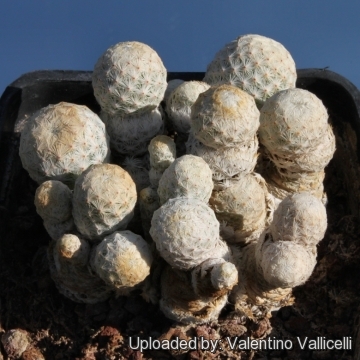 Escobariopsis albiflora (Mammillaria albiflora) Photo by: Valentino Vallicelli
Escobariopsis albiflora (Mammillaria albiflora) Photo by: Valentino Vallicelli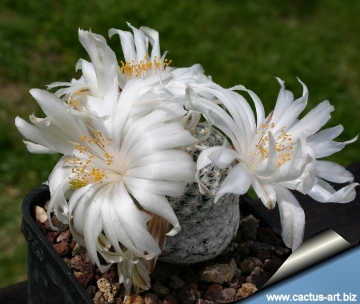 Escobariopsis albiflora (Mammillaria albiflora) Photo by: Cactus Art
Escobariopsis albiflora (Mammillaria albiflora) Photo by: Cactus ArtCultivation and Propagation: This plant is not famous for being easy to cultivate, but in good conditions with excellent ventilation, it grows without difficulty. It is especially sensitive to over-watering. So careful watering and an open mineral potting soil are a must. Avoid the use of peat or other humus sources in the potting mixture, and eventually add some limestone. Can be sensitive to frost (but if dry they are resistant to -5° C). It requires maximum sun exposure to reach its full potential, and to achieve success in flowering. A winter rest that allows the plant to shrivel (perhaps losing up to 25% of its summer height) will encourage flowering and long time survival. Be careful to encourage slow growth. Provide very good ventilation.
Propagation: Direct sow after last frost. (it usually doesn't produces offsets)
Your Photos

by Cactus Art
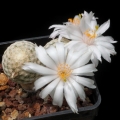
by Valentino Vallicelli




















